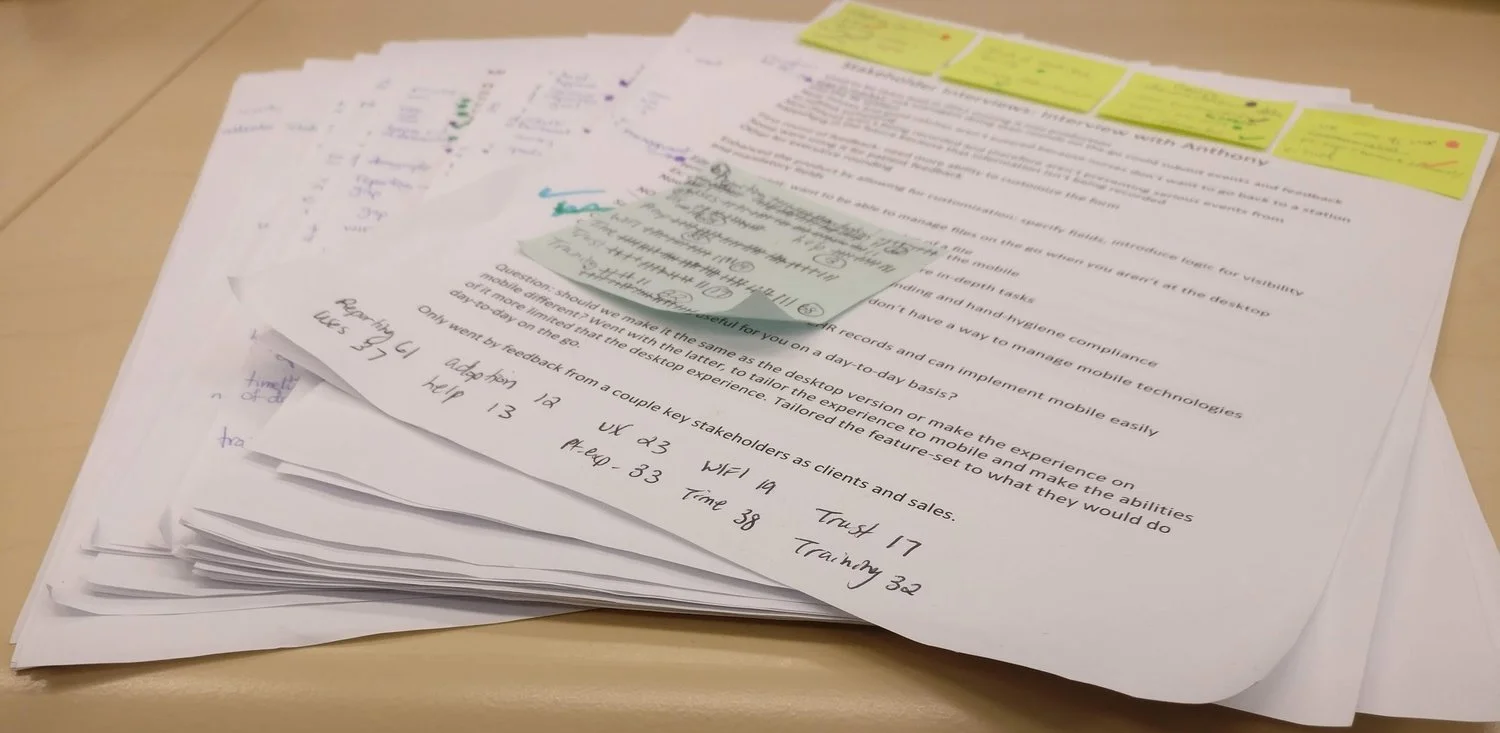Homecare study
RLSolutions, 2019
Business problem
Approach
Next steps
Results
The Product Manager for the mobile product at RL Solutions (software for healthcare) approached me for help not knowing what to do with the current app experience. Since it was created, the app had only seen minor bug fixes and enhancements. What else can we do with mobile to make it better?
The PM was already in a regular cadence of speaking with clients using the app to hear about their frustrations and successes. I joined a few of these calls to get an understanding of what clients were using the app for already.
Taking a step back, I spoke with the developer who built the app to learn more about why and how he built it. I also spoke with sales representatives to learn how they are positioning the mobile product and what problems organizations expected to be solved once they purchased mobile.
After gathering a general pulse on the situation, I ran a few calls with mobile clients from both small and larger organizations to learn why they were using the app. I also spoke with organization who were using other apps and organizations who were not using mobile apps at all. During these calls, it was found that the app was being used as expected. However, the adoption rate of mobile users was low and many organizations were not in the habit of using the mobile solutions to assist with their initiatives. There were also some organizations that stopped using it altogether. Although there seemed to be some improvements that could be made to the app, there was a theme that kept arising during the conversations that I wanted to narrow in on. Clients kept bringing up their homecare divisions during our phone conversations and expressing how the homecare industry is under a lot of stress. They would mention that their homecare team would benefit from a mobile solution. This is when the research began to shift the focus to homecare.
The next step was to visit these organizations in person and observe their homecare environments in order to understand where we might be able to alleviate frustrations and stress. After pitching this research project to several organizations, there was a lot of interest in partnering with us to produce valuable research that would inform a homecare mobile solution. Ideally I would have visited organizations across the United States (our client base) in order to understand homecare in many different contexts. However, the healthcare industry moves incredibly slow and healthcare workers are extremely busy people. In the end, I was able to visit two organizations. One was a local organization who invited me and the PM to speak with those who oversee and direct the homecare division. Another was an American client with a homecare division of 600+ employees who invited me to speak with the Director of Quality and several homecare workers and managers.
While these visits only allowed for an interview-style investigation, the information gathered was a starting point. The American client visit resulted in a one-on-one interview with the Director of Quality for homecare, a one-on-one interview with a manager, a two-on-one interview with two nurses, and a focus group with several nurses and managers. The focus group was a same-day last minute addition to the visit’s original plan. Instead of running a Quality meeting with his nurses and managers, the Director of Quality decided to give me the floor for an hour which I happily used to the advantage of the homecare study.
I listened to all the phone call and in-person conversations (which I had recorded) and made notes. I then reviewed the notes and coded them for themes. I ended up with a hierarchy of themes that spoke to what homecare workers find important and experience in their day-to-day work. The visits also informed a generalized task flow that a homecare worker would have on any given work day. Regardless of only being able to visit two organizations, the frustrations and needs expressed aligned with previous phone conversations had with other organizations.
The study, though a simple pulse on part of our client base, revealed that a homecare solution would be a beneficial and profitable direction to take the mobile product. I prepared a report on the study to share with stakeholders.
A sample page from the report which outlines the themes from the research.
Printed notes from all research conversations with marking from coding text for themes.
An example slide from the report discussing a client who was visited in-person - who currently uses mobile devices as part of their work.


